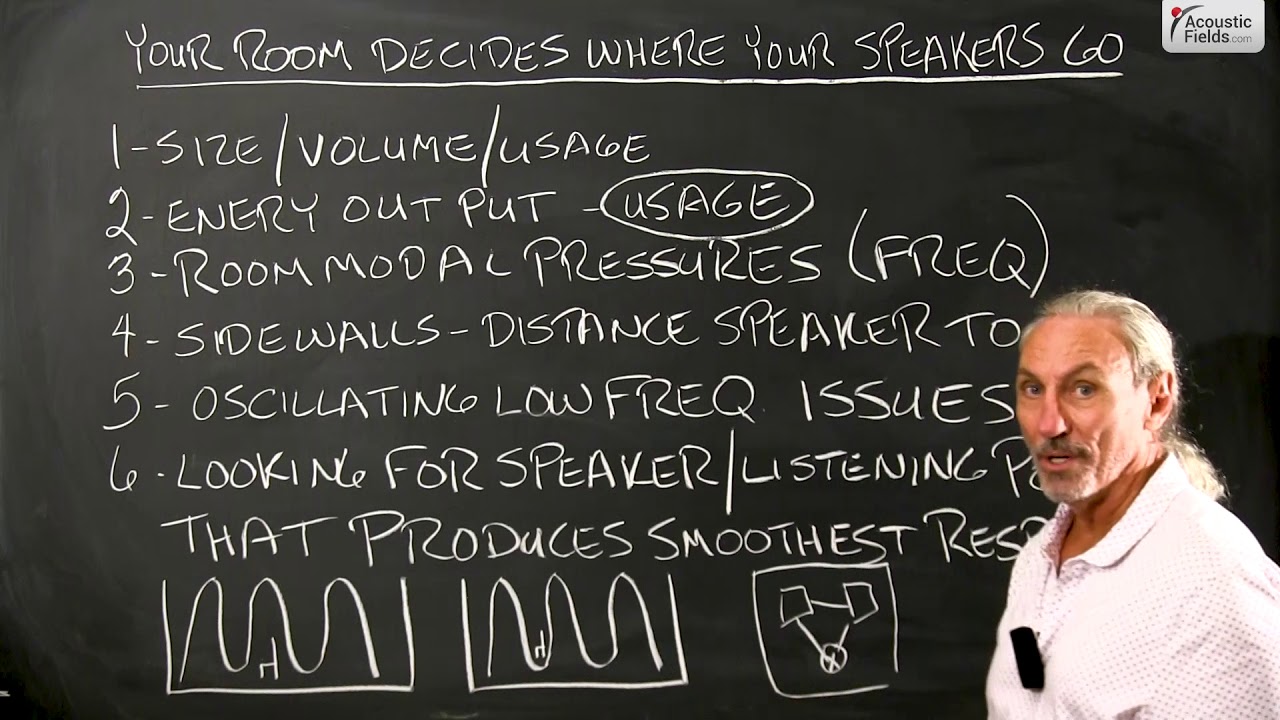Let’s talk about how your room decides where your speakers go. A lot of people when I talk to them on the phone or look at their room forms and discuss it with them they’re always saying “Well, I want to put my speakers here. I want to put my speakers there. I want to put my listening chair here.”
You can’t interject the personal pronoun into this equation. You have to look at your room size, volume and usage and there’s a particular place in that room that works good for the speakers, works good for the listening position. Let’s walk through some descriptions there. It’s all about energy output in the room which is definitely usage, what are we doing in the room, live versus voice.
We know from past videos that our room is full of unwanted low frequency pressure issues, unless you have a good room size which is the 30-40 foot dimensions which most of us don’t have. The distance from the sidewalls to the speakers is critical. Oscillating low frequency issues throughout the room and our goal in the positioning of the speaker – listening position triangle so to speak is to move this whole entity within the room to achieve the smoothest response curve we can for the usage that we’re doing. For mastering and for mixing, whatever we’re doing in the room, we want to get the smoothest curve that we can.
So if we position our speaker this is oscillating low frequency energy in a room, position our chair in a peak, a low frequency peak, there’s going to be too much energy at that particular frequency. If we position our chair in a null or a low, we may not hear it at all. In fact, we’re going to do a video shortly about the demo room that we have in Los Angeles where people always come in and ask where the subwoofer is because there’s no subwoofer in the room. But it’s a very small room and you can hear all the low frequencies in the room. So we’ll do a follow-up video on that for you.
Everything is dependent on room size, volume and usage, how much energy you’re using in the room, what’s our modal pressure distribution, distances to sidewalls and positioning of this kind of magical triangle with our speakers in listening position.
—
This is an unedited transcript from our video series from Acoustic Fields. There will be some errors in grammar and sentence structure that occur during this translation process.
For complete understanding and comprehension, please view the video which is included in this text. For any additional information regarding this topic or others relating to room acoustics, please contact us directly at:
P: 520 – 392 – 9486







